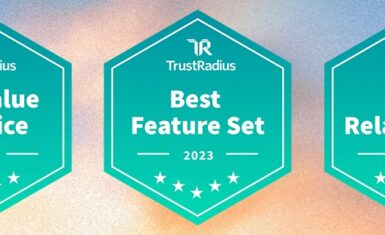Are you a firefly, too? No way!
Oh my gosh, you are DEFINITELY a koala.
I’m mostly rabbit but some honeybee too.
Oh, honeybee is my second one!
I’m 100% owl.
So am I! Oh, now I know who to email at 3 a.m. when I’m in the zone!
Any turtles here?
If you don’t have the context, that conversation sounds a bit…unhinged. Especially when you hear that this type of conversation was happening over lively Executive Leadership Dinners, rapid-fire Teams chats, and any other number of corporate settings.
About that context:
It started with a Buzzfeed-style quiz.
In the lead-up to (the company formerly known as) Corel’s full rebrand as Alludo, the brand team had many conversations about how we’re not just reimagining the brand; we’re reimagining the future of work. A huge part of that is decoupling knowledge work from time and space—eschewing mandated cubicles and traditional 9-5 schedules. We call it Work3.
What is a Chronotype?
It’s bizarre to think that the world has spent generations expecting most of the population to be at their most productive and creative during specific hours—and the same specific hours as all their colleagues.
Some of us rise before the sun and hit the ground running. Others find their groove in the afternoon. Some create magic in the moonlight.
Others have bursts of energy and inspiration throughout the day—or something else entirely.
We realized that every other species on the planet follows a schedule that fits their needs. It’s based on safety, practicality, energy, light, and adaptation based on inherent skills and physical traits.
This tendency—to be active at certain times of the day and dormant at others—is called a “chronotype,” and there are many different kinds of chronotypes.
Chronotype variations
Humans have remarkable diversity within our species, but the world of knowledge work has made next to zero accommodations for variations in chronotypes.
We decided to change that.
But first, we thought it’d be fun and useful to help people identify their specific chronotypes and then provide a bit of insight into how they might best leverage their chronotype at work.
We designed a quiz with six possible outcomes, based on real, scientifically documented chronotypes. We tied each outcome to an animal that represents one of those chronotypes. The options:
- Honeybees, who are most active early in the day.
- Turtles, who are fairly steady all day.
- Fireflies, who tend to be most energetic in the afternoon and evening.
- Owls, who (obviously!) shine late at night.
- Rabbits, who can be active both at dawn and dusk, but need a break in between.
- Koalas, whose activity hinges on energy level and can be spontaneously active throughout the day.
This is a massive oversimplification of the chronotypes, which are described in depth in the quiz results.
There’s no such thing as a right or wrong answer in this quiz, or one chronotype that’s considered “better” than others. There are advantages and drawbacks to each type. It was important to us to ensure that no one felt inferior (or superior) based on their chronotype, because we are consciously working to break the stigma facing anyone who doesn’t naturally thrive from 9 to 5. Plus, this is meant to be fun.
Working within your ideal schedule
Knowing that not everyone is the same type, why wouldn’t we encourage people to do their best work when it suits them, rather than forcing them to compromise their creativity, productivity, and energy levels?
Knowing your chronotype—and sharing your results with others— can help in many ways. For starters, it can help you embrace your natural rhythm and work with your ideal schedule instead of fighting it. You can also let other people know that you’re less likely to be responsive during certain times. That way, your supervisor and colleagues know you’re not ignoring them—you’ll knock things out of the park when it’s your time to shine.
You can identify people on your team with the same chronotype as you and make an effort to connect and collaborate with them during your shared “on” time. (Two of our owls famously bounce ideas back and forth at 3 a.m. because they’re both at their best.)
A great team has a mix of chronotypes so that all the bases are covered.
It’s wonderful to watch people feel “seen” when they identify their chronotypes, and get excited about discussing them with others. We’re actively seeking ways to infuse chronotypes into more of our employee engagement and brand work. We already had a Chronotype Battle where employees representing different chronotypes competed in online games for prizes. We distributed time of day-themed swag boxes that were a nod to the various chronotypes. And there’s much more to come.
The future of work is more productive because it’s more flexible—not in spite of its flexibility. We truly believe that when people are given space to work and time for ideas, they shine. When they’re empowered to do their best work on their terms and their schedule, the whole company thrives.
Which chronotype do you think you are? Take a guess, and then take our quiz to find out.






